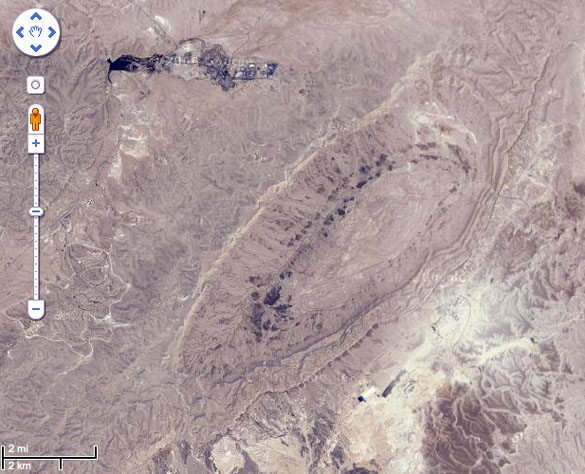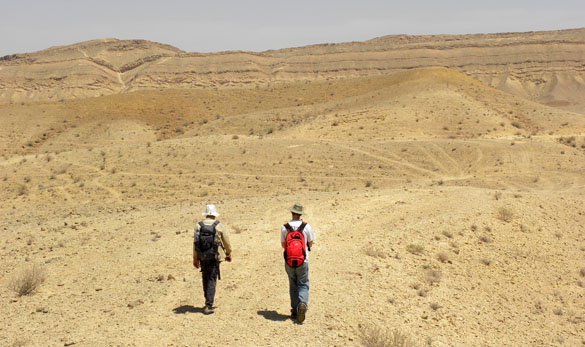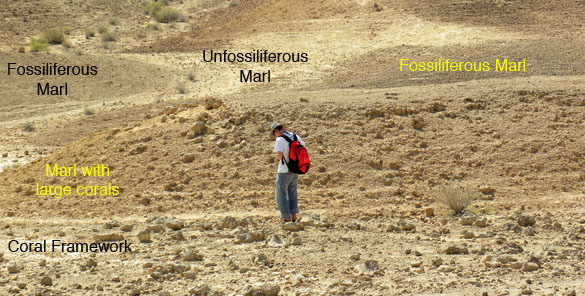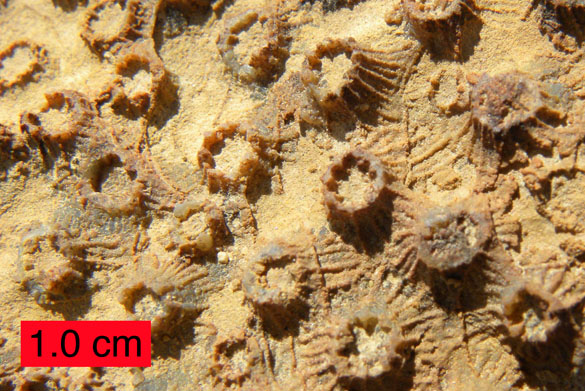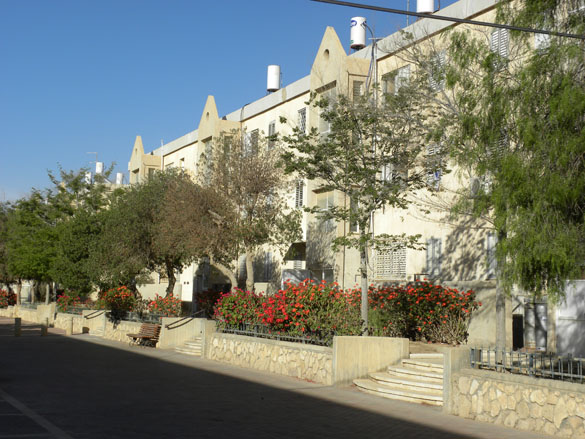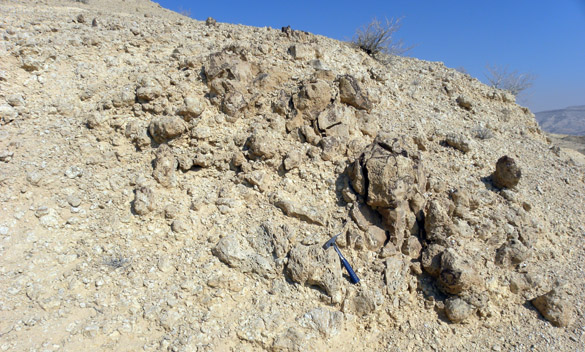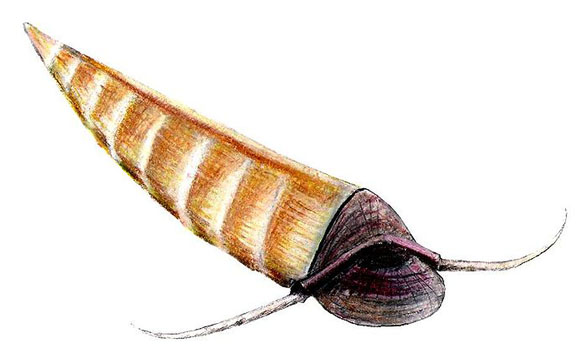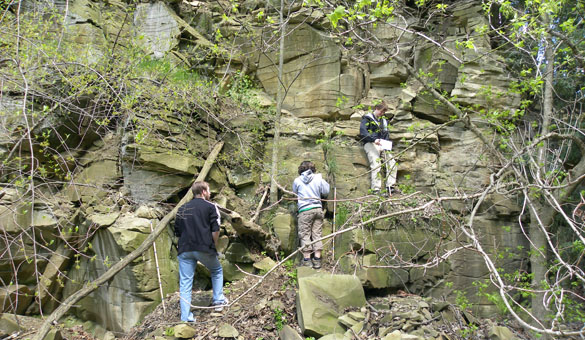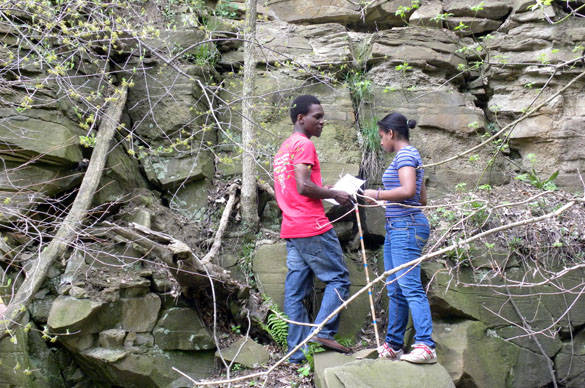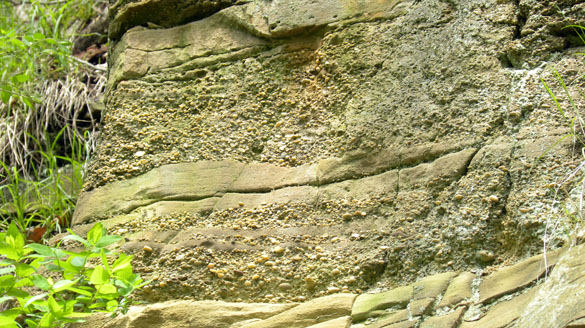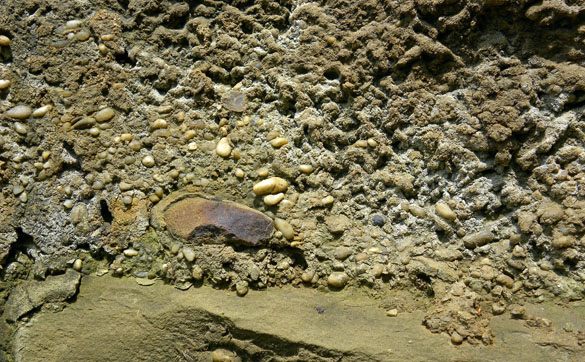
This week’s specimen is a piece of obscure paleontological history, although it represents a “fossil” that was for a short time one of the most prominent in the world. In 1864, the uber-geologist Charles Lyell claimed it was “one of the greatest geological discoveries of my time”. Charles Darwin cited it in his fourth edition of On the Origin of Species as the most critical find yet to show the rise of life from single-celled ancestors. Yet it is only a metamorphic rock with no evolutionary relevance whatsoever. Wooster obtained a sample of this material sometime in the nineteenth century, early enough in the story that it was cataloged into the fossil collection and labeled with its original name: Eozoön canadense.
In 1864, two major figures in North American geology met to discuss a set of layered rocks found just west of Montreal and now known to be about 1.1 billion years old (Proterozoic Eon). William E. Logan (1798-1875), the Director of the Geological Survey of Canada, showed John William Dawson (1820–1899), Principal of McGill University, specimens he believed represented evidence of Precambrian life. Dawson not only agreed that these were fossils, he published a description in 1865 announcing them as “one of the brightest gems in the scientific crown of the Geological Survey of Canada”. He named the fossil Eozoön canadense — the dawn animal of Canada.
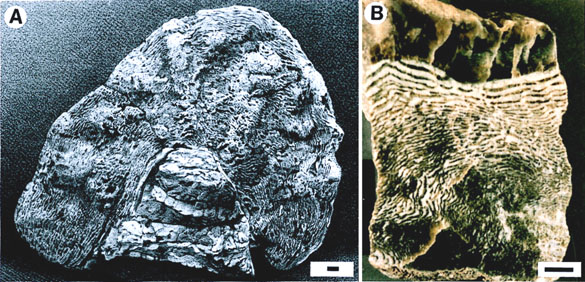 Eozoön canadense; (A) as illustrated by Dawson; (B) the holotype in the U.S. National Museum of Natural History. (Scale bars = 1 cm; figures from Schopf, 2000.)
Eozoön canadense; (A) as illustrated by Dawson; (B) the holotype in the U.S. National Museum of Natural History. (Scale bars = 1 cm; figures from Schopf, 2000.)
Dawson concluded that Eozoön canadense was the test of a single-celled protistan known as a foraminiferan — even though it is staggeringly larger than any foraminiferan ever known. Eozoön was an immediate hit, attracting the attention of Darwin, Lyell and others intensely interested in finding the deepest roots of the fossil record.
Oddly enough, Dawson had an opposite opinion of the importance of Eozoön. He was an anti-evolutionist anxious to discredit Darwin’s ideas that were quickly sweeping the scientific world. He wrote:
“There is no link whatever in geological fact to connect Eozoön with the Mollusks, Radiates, or Crustaceans of the succeeding [rock record] … these stand before us as distinct creations. [A] gap … yawns in our imperfect geological record. Of actual facts [with which to fill this gap], therefore, we have none; and those evolutionists who have regarded the dawn-animal as an evidence in their favour, have been obliged to have recourse to supposition and assumption.”
In other words, Dawson thought his new fossil would be the death of evolutionary theory because it opened up an unbridgeable “gap” between “primitive” and “advanced” animals. Ironically, at the same time Darwin was grateful to at last have a single-celled fossil at the base of the family tree.
Eozoön canadense had a short and contentious life as a fossil. It was immediately challenged as inorganic by many scientists. In 1879, a German zoologist named Karl Möbius published a study showing that whatever it is, Eozoön canadense has no relationship with the foraminiferans and probably no other organism. Dawson held firm to his beliefs. The final blow came in 1894 when two geologists found Eozoön in boulders of marble shot out of Mount Vesuvius. Apparently the “fossil” is a metamorphic rock made of layers of white calcite and green serpentine. Dawson was unmoved and was actually working on yet another Eozoön paper when he died in 1899.
So our Fossil of the Week turns out not to be a fossil at all, and the name Eozoön canadense is now a nomen nudum — a “naked name” signifying a taxonomic mistake. At one time, I imagine, the geologists at Wooster were pleased to have a fragment of the oldest evidence of life. Now I treasure our specimen as a connection to the early passions of our science.
References:
Hofmann, H.J., 1971. Precambrian fossils, pseudofossils, and problematica in Canada. Geological Survey of Canada Bulletin 189.
O’Brien, C.F., 1970. Eozoon canadense “The dawn animal of Canada”. Isis 61: 206-223.
Schopf, J.W., 2000. Solution to Darwin’s dilemma: Discovery of the missing Precambrian record of life. PNAS 97: 6947-6953.
 MITZPE RAMON, ISRAEL–Today Will Cary, Yoav Avni (our friend from the Geological Survey of Israel) and I worked in the northern end of Makhtesh Gadol (“the large crater”). This geomorphic feature looks a bit like an oblong impact crater, but it is actually a kind of breached anticline known as a makhtesh.
MITZPE RAMON, ISRAEL–Today Will Cary, Yoav Avni (our friend from the Geological Survey of Israel) and I worked in the northern end of Makhtesh Gadol (“the large crater”). This geomorphic feature looks a bit like an oblong impact crater, but it is actually a kind of breached anticline known as a makhtesh.


